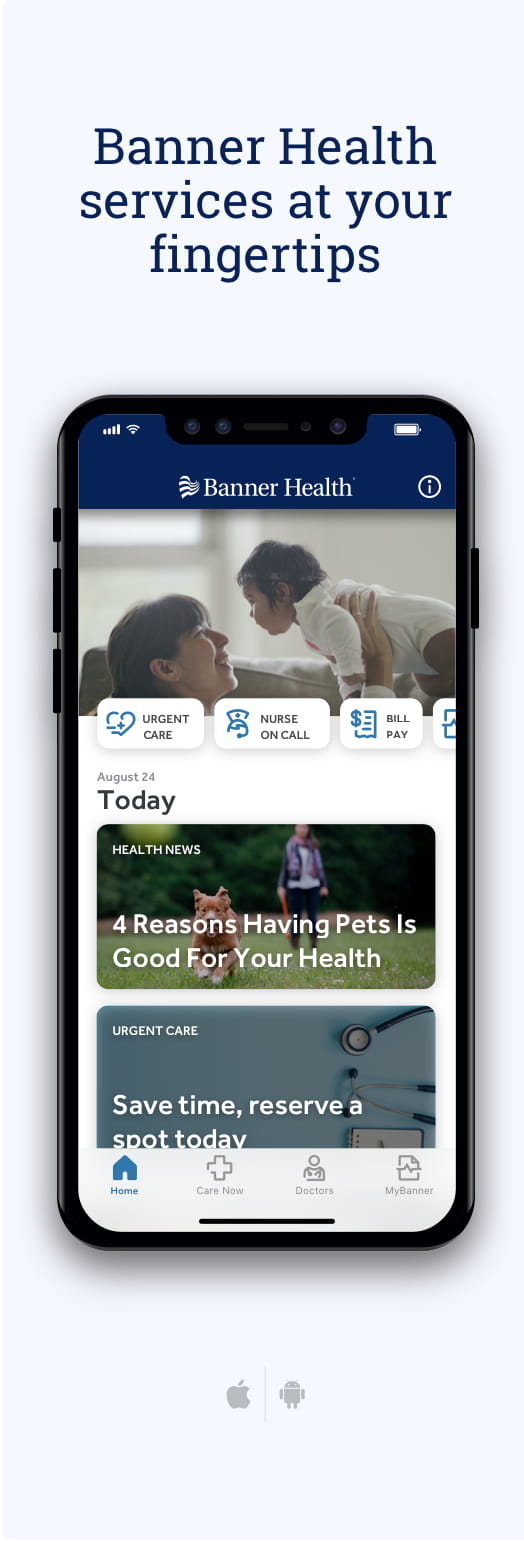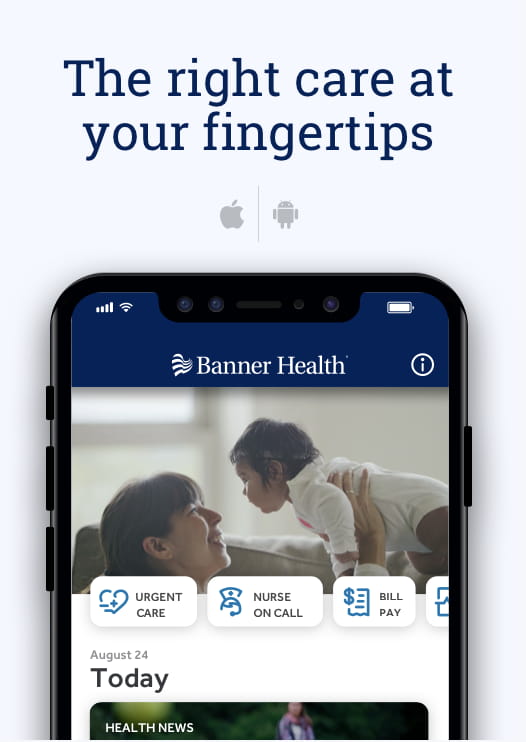With kids back in school, it’s only normal for bacteria, viruses and parasites to make their way from the classroom to the house. Even with regular handwashing, hand sanitizer or mask wearing, every parent knows some illnesses still spread.
“It’s not unusual in the fall and winter for us to see a spike in contagious illnesses,” said Gina Montion, MD, a pediatrician with Banner Children's. “The common ones we typically see each year are common colds or croup from many different viruses, seasonal flu, the stomach flu”.
At times, we all wish we could keep our kids in a protective bubble, but how do you protect your child during this especially germy season? And even more, how do you keep the contagion from spreading in your home?
Below we share six common contagious conditions and how to identify and treat symptoms while reducing the spread.
Pink eye (conjunctivitis)
Has your child awoken with one or both eyes filled with gooey grossness? No, that’s not your normal sleep crust. It’s most likely pink eye, also known as conjunctivitis (an eye infection). Pink eye occurs when the conjunctiva (a membrane that covers the white part of the eyes and lines the inner eyelid) becomes inflamed.
- Symptoms: Pink eye can be caused by bacteria but most commonly, it is caused by a virus. If it’s bacterial, typically it will start in only one eye. Their eye will be bloodshot and have thick and gooey eye discharge. They may experience itching and burning as well. If it’s viral, they will have mild eye redness, watery eyes or just crusting at the corners and may experience some stinging.
- Treatment: Most often pink eye will resolve on its own. If their symptoms are mild, just keep them comfortable at home until symptoms improve. However, if your child has severe symptoms like a very bloodshot eye or thick eye discharge, they should be seen by a pediatrician for antibiotic eye drops or ointment.
- How to reduce the spread at home: Make sure you do not touch your eyes or nose and have them wash their hands with soap and water often.
Head lice
Just thinking about your child potentially bringing this home can make your skin crawl and scalp itch. Head lice are small insects that live in human hair and feed on blood from the scalp. They also lay eggs, called nits, on hair shafts.
While you might think lice can jump from scalp to scalp, adult lice can’t jump or fly—they only crawl. Most often kids share them when they have head-to-head contact, share combs, brushes, hats, headphones and other personal items.
- Symptoms of head lice: A very itchy scalp
- Treatment: Although it can easily be spread person-to-person, head lice won’t cause a serious disease. “Some people swear by their home remedies for treating lice, however none of them are reliably effective and are generally not recommended,” Dr. Montion said. Most often you can get rid of lice with over-the-counter treatments. Make sure you follow the directions and do a second application on day 8 or 9 to kill recently hatched lice that wouldn’t have been killed by the first treatment.
- How to reduce the spread at home: While you might want to just burn everything, that’s certainly not logical. You can, however, reduce the risk of lice spreading in your home by avoiding close head-to-head contact and by not sharing grooming items or furniture with the person who has lice and nits.
Seasonal flu (influenza)
Influenza, also known as the seasonal flu or just flu, is an infectious respiratory disease. While the flu virus may resemble a common cold, a fever is almost always present with the flu and is less common in the common cold.
- Flu symptoms: Body aches, fatigue, fever, sore throat, runny nose, congestion, cough and headache. Learn more to better recognize symptoms.
- Treatment: There are anti-flu medicines available that can help lessen symptoms and shorten the duration by one or two days, but they must be given the first 72 hours (about 3 days) of an illness. Typically, your child should recover within two weeks.
- How to reduce the spread at home: Reduce the spread by making sure everyone at home avoids touching their eyes and nose and washes their hands often. Also, avoid close contact with others or have your child mask when near others to help reduce the spread. And do not forget to clean and disinfect any contaminated surface. Getting the flu vaccination before the flu season is the single most effective thing in preventing the flu.
Stomach flu (norovirus)
Not to be confused with influenza, the stomach flu affects the stomach and intestines and can cause vomiting and diarrhea. Norovirus infection is a very contagious disease and takes between 12 to 48 hours (about 2 days) to incubate and start showing symptoms. The three primary ways of getting the stomach flu are from contaminated food or drink, touching contaminated things and then putting your fingers in your mouth or being in direct contact with someone who’s infected.
- Symptoms: Nausea, vomiting, abdominal pain, diarrhea and fever
- Treatment: Because a virus causes it, antibiotics won’t help treat it. Most resolve on their own after a few days. If nausea and vomiting are severe, you may want to have your child seen by their doctor to assess hydration and possibly prescribe medicine for nausea. You should seek immediate medical attention if your child has significant signs of dehydration, like sticky saliva, dizziness, severe abdominal pain or blood in their stool. Make sure to wash any clothing, sheets or towels with really hot water and bleach.
- How to reduce the spread at home: Make sure everyone is washing their hands well and often, especially after using the bathroom.
COVID-19
The novel coronavirus, COVID-19, is a respiratory virus that is transmitted through droplets when an infected person coughs, sneezes or talks.
- Symptoms: Body aches, severe fatigue, fever/chills, runny nose, congestion, cough and headache. Extreme shortness of breath is a very concerning symptom. Unique to COVID-19 are symptoms of loss of smell or taste. In children, diarrhea is a more common symptom. Learn more to better recognize symptoms.
- Treatment: Consider getting your child tested for COVID-19 if they have any of these symptoms to help guide care and isolation if positive. See a doctor if your child develops shortness of breath, new confusion or if you notice their illness is severe or rapidly worsening.
- How to reduce the spread at home: Have everyone wash their hands frequently and avoid touching their eyes and noses. Do not share cups, glasses, eating utensils, dishes or electronic devices, such as cellphones, with anyone who is sick. If someone in the home is sick, wear a mask when near others in your house to help reduce the spread.
More information about COVID-19 and updated information vaccine and booster recommendations can be found on the Centers for Disease Control and Prevention's (CDC's) website.
MRSA (staph infection)
- Methicillin-resistant Staphylococcus aureus (MRSA) is a contagious type of staph bacteria that is resistant to several antibiotics. It can spread when someone touches something contaminated, from person to person or from one area of their body touching another (such as from dirty fingernails or hands).
- Symptoms: Usually presents as a sore or crusty skin wound
- Treatment: Most of these heal on their own if they are kept clean and bandaged. However, if your child has a sore that appears to be infected or is getting worse, have it checked by your pediatrician.
- How to reduce the spread at home: Make sure to wash your hands and under fingernails as well. Sometimes people are carriers for MRSA, which means they can unknowingly spread it without having any symptoms. This is why handwashing is so important.
Talk to your doctor for more information about these medical conditions or visit bannerhealth.com. If your child is experiencing symptoms, schedule an appointment with a Banner Health specialist.


